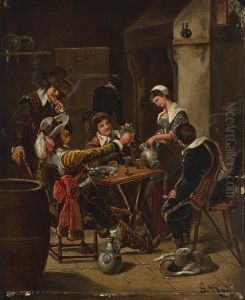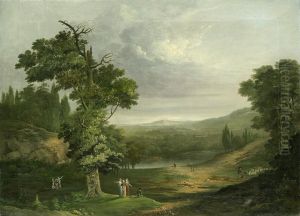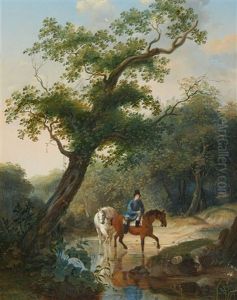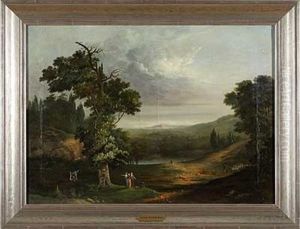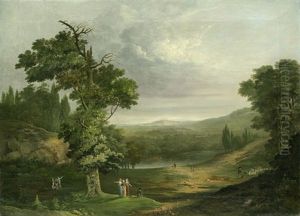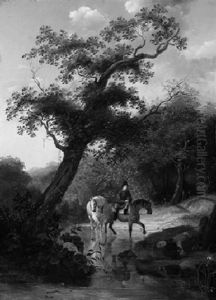Johann Gottlieb Rost Paintings
Johann Gottlieb Rost was a German artist born in 1688, known primarily for his work as an engraver. His life and career unfolded during a period in European art history that was marked by the Baroque style, which was characterized by its exuberance, grandeur, and detail.
Rost's training and early career details are not extensively documented, but it is clear that he became proficient in the arts of engraving and etching, which were highly valued skills in the production of artwork, books, and scientific publications at the time. The craft of engraving involves incising a design onto a hard surface, such as a metal plate, which can then be used to produce multiple prints. This technique was essential for disseminating visual information before the advent of modern printing technologies.
Although specific details of Rost's commissions and clientele remain somewhat obscure, his works would have catered to the tastes of the upper classes and the demands of publishers. His engravings likely included religious and mythological scenes, portraits, and possibly decorative designs, which were common themes and uses for engravings during the Baroque period.
Johann Gottlieb Rost passed away in 1727. While he may not be as widely recognized as some of his contemporaries, his contribution to the art of engraving would have been part of the rich tapestry of Baroque visual culture. His works, like those of many engravers of the time, would have played a role in the spread of artistic and scientific knowledge across Europe. Unfortunately, due to the limited availability of historical records, Rost's legacy is not as well documented as that of some other artists from the era, but he remains a figure of interest for those studying the history of printmaking and Baroque art.
